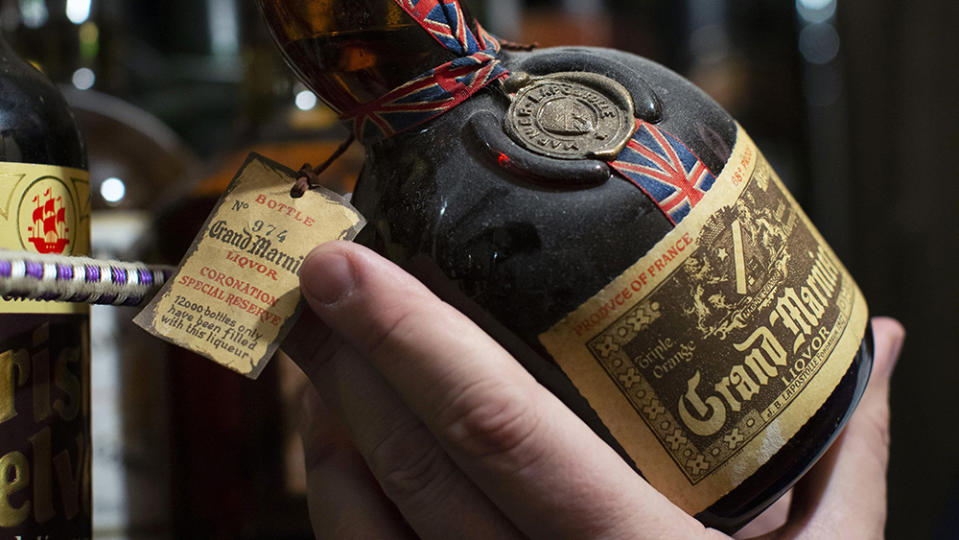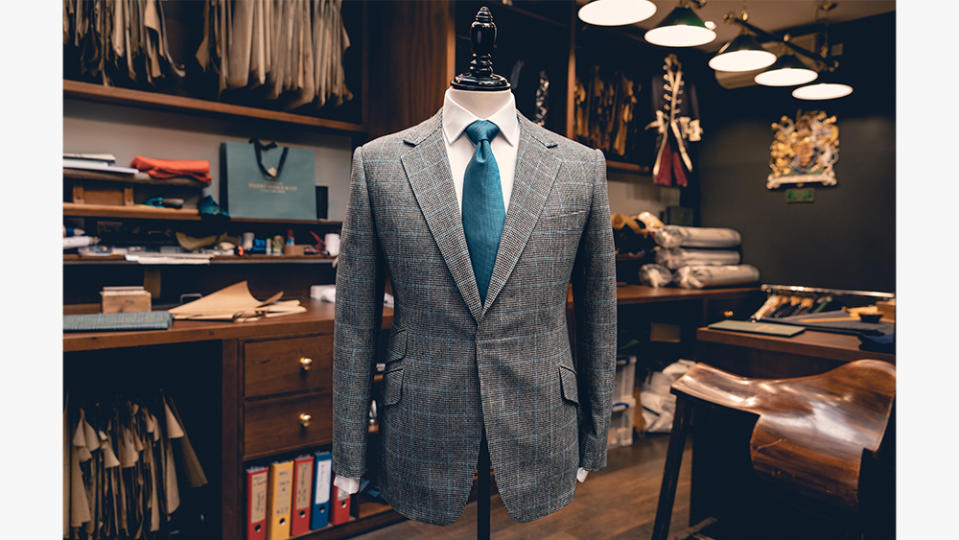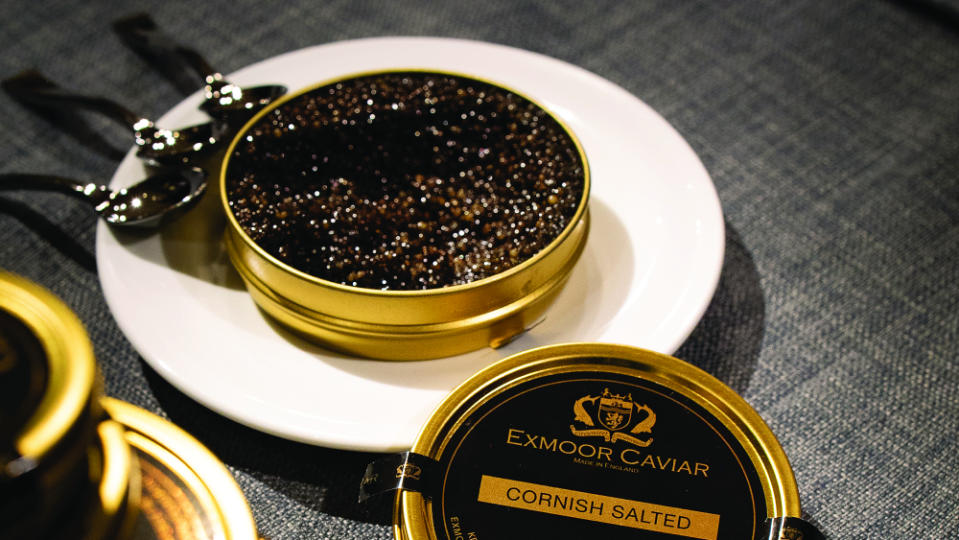The British Pound Is Sinking—and Its Luxury Market Is Rocking as a Result

It was the second Paul Newman Daytona that David Silver had sold for £275,000 in less than two weeks that proved decisive. Silver owns the Vintage Watch Company, a Rolex specialist dealer that sits in tony Burlington Arcade, that two century-old strip of luxury boutiques in London’s Mayfair. Despite his British base, many of Silver’s customers are Americans—including both the Newman collectors. “They were clients who’d always hovered around wanting that watch, and never quite done it,” he says, of the much-prized model that he’d usually sell once every six months or so, perhaps, “But they saw they could save 15 percent just because of the dollar exchange rate right now, and that made them feel good about finally buying one.”
Those two canny watch collectors aren’t alone. Britain’s sterling has been wobbly on global markets since the unexpected result of the Brexit vote spooked currency watchers and drove it down by 20 percent or so against the dollar six years ago. But political turmoil in the UK, marked by the arrival earlier this month of its fourth prime minister since 2016, has caused even greater shocks. Initially, it dinged sterling down to $1.15 or so against the dollar, seemingly bottoming out there. Yet a risky fiscal gamble by new chancellor (and former financial analyst) Kwasi Kwarteng on Friday managed to worsen rates to historic lows which reached almost parity ($1.03 to £1) in early trading yesterday. It was the lowest sterling’s slumped against the dollar since decimalization in 1972.
More from Robb Report
This 1-of-1 AP Royal Oak Will Be Auctioned Off to Raise Money for a Clean Water Charity
You Can Now Book a Stay at King Charles III's Royal Retreat in Transylvania
The King of Scotland Once Lived in This London Townhouse. Now, You Can Check in for the Night.
British luxury firms are seeing surges of business from dollar-touting buyers in response. “Our message to brands is that whatever you’re putting into your marketing, divert it to the US,” says Helen Brocklebank who runs British luxury trade association Walpole, “There’s already a strong customer base there, and a great deal of existing love, so you’re pushing on an open door. This is a chance to get that door pinned back on its hook, and stay wide open.”
Watch dealer Silver agrees; he estimates his business is up 30 percent this month versus September 2021. He notes the coincidence of the Queen’s death, which had brought tourists to London who could then spend their powerful dollars in situ, and stresses that the UK’s role in luxury has always leaned more heavily on production than consumption. “The UK as a luxury marketplace is poor in comparison to the rest of the world—it always has been,” Silver says, noting that boutiques in Bond Street and around are mostly buoyed by tourists; Walpole’s data says that the luxury sector was worth £48bn to the UK economy when last surveyed, in 2019. Certainly, 75 percent of David Silver’s business comes from overseas, though he notes that some of his dollar-spending buyers don’t live in America: Some might be UK-based and paid by a US corporation, while others are from Asia, where currencies follow the dollar closely. Those customers are vacuuming up rare timepieces with gusto, he notes, since they’re well aware this is likely a window to buy. “It’s a temporary thing, because if this carries on, in two or three months, we’ll have to put our prices up and the benefits will be eroded,” says Silver, “But right now, they’re taking advantage of it while it’s there.”
Other luxury sectors have seen similar sudden upticks as he has in watches—the world’s secondary market for wine, for example, is traded in pound sterling, making snapping up a magnum or two right now a relative steal, notes Liquid Icons expert Lewis Chester. It’s timely that British sparkling producer Gusbourne Estate just released Fifty-One Degrees North, which costs £195 per bottle, he adds, which prices it alongside the most prestigious cuvée champagnes—or it did, until the recent tumble. “Older collectible malt whiskies are clearly in a boom,” he adds, “Like fine wine, rare whisky is seen as an inflationary hedge as a real asset, and also a currency hedge with price movements tending to be inversely correlated with the strength or weakness of the local currency.”
Edgar Harden runs the Old Spirits Company, where he hunts down such elusive one-offs across the liquor spectrum for a raft of global collectors. He’d been chatting with an LA-based buyer since June about a 4-liter bottle of Suntory from the 1970s, priced at £1,950. “The change in the exchange rate pushed them over the edge about two weeks ago,” he tells Robb Report, noting that his business this quarter is around one third higher than the same period next year, and a third of those buyers are new customers. Orders have increased since May, Harden continues, but August was the banner month—at least until now, with September likely to outstrip it. “The US has always been the most important market for my goods, but now it’s completely dominant because of the exchange rate,” he says.

The same is true on Savile Row, where tailor Simon Cundey of Henry Poole reports that many American customers have called him up in recent weeks and pre-paid for clothing that they’ll order when he arrives on a tour to New York, DC, Chicago and Boston starting next month. It’s been such a success, in fact, that Cundey says the firm is planning several Instagram activations this week to highlight the sterling-related advantage. “Anything around $1.40 to the pound has always been great for us, but it was at about $1.15 to the pound that people started calling up to pre-pay, but $1.10 or lower is a golden ticket,” he says, adding that it’s lured back many customers he hasn’t seen for 10 years or more. Buyers are increasing the volume of orders: four suits rather than one or two, or perhaps a sport coat and trousers alongside a suit. A custom customer has typically been trading up, too, enjoying bespoke for the first time—and Cundey suspects they’ll stick with the higher priced option even as currencies return to more normal levels.
Nearby Lock & Co, the country’s foremost hattery, reports a similar surge in business, per MD Ben Dalrymple, who says that one sale this summer to an American was especially touching. It was a Californian visitor, whose father had owned a Lock & Co Coke hat (or bowler in common parlance). “He had always wanted to own one of his own, for sentimental reasons, but he could never quite justify spending the money on something he thought he would not wear that often,” Dalrymple said, “But when he visited London this summer, he made a special visit to the shop and made the purchase, as it was proportionately much better value.”

Real estate isn’t immune to the impact, either, according to Black Brick partner Caspar Harvard-Walls, who specializes in premium central London (PCL) real estate. He says that 2020 and 2021 were dominated by domestic buyers, as a result of the pandemic which meant PCL, usually bought by foreign buyers, was soft. Q1 2022 saw the trend reverse in PCL: there was a 7.7 percent increase in the number of transactions above £5m in that period versus the same a year earlier.
After the usual summertime lull, Harvard-Walls continues, September has been unusually busy. “People buying second homes don’t decide to do it yesterday, but clients who were already thinking about buying are fast forwarding what they were doing,” he says. “I had a client three weeks ago, who purchased from us at the beginning of the pandemic and has just done his flat up, say to me ‘If you’re a dollar-based buyer and not going to be buying now, the question is when?’” Harvard-Walls also says he’s seen dollar-based UHNWers buy up sterling now that they don’t intend to disburse immediately. “It’s going to have a long-term impact on London. They might sit on their pounds for two years because they don’t have to do anything tomorrow,” he adds, “Property takes a long time to transact. So we won’t know the real result in this sector of what we’re talking about now until at least Christmas or the New Year.”
Kenneth Bening, who owns British caviar brand Exmoor, points to the increase in appeal for investment in his company from deep-pocketed US-based backers “We’ve got interest from potential suitors from the US, I’ll put it that way,” he tells Robb Report, cryptically. And Leo Turner from Heraldic crest specialist and luxury stationer Downey says his US-focused business is up 10-15 percent, whether by mail or Americans visiting in person. Many of them, it seems, may have taken a trip on a whim—or so Conor O’Leary, MD of Scottish hospitality icon Gleneagles, would predict.

He says that business at his original property, the golf-centric resort where Americans are the bulk of his clientele, will usually taper off by Labor Day or so (The new city center Townhouse is primed for more year-round business in central Edinburgh). Not so this year. “They’re still coming, well into September and October, and to Christmas, which is not typical at all,” he says, “And before, the typical American business would come to us six months out at least. Now, we’re seeing a really short lead time, where they make a quick decision to come over to the UK—people coming in October are booking as we speak, so it’s an ad hoc decision to jump on a plane to come on holiday. That’s what gives us the clue it’s about currency, as well as the volume.” British luxury chain Firmdale, known for properties like Ham Yard Hotel in Piccadilly, reports a similar pattern. “There’s very little rate resistance,” says director of marketing Craig Markham of dollar-based bookings, “The US represents the largest leisure and corporate sector for us, and bookings from the US are showing no signs of slowing down.”
They should continue at breakneck rates, too, even if the currency stabilizes as expected—most of these luxury-sector insiders said they presume sterling will climb back to $1.20 or $1.25. Buried in chancellor Kwarteng’s announcements was a stealth U-turn on a policy enacted by his predecessor Rishi Sunak in early 2021. Sunak abolished the ability for tourists to reclaim their VAT, or sales tax, claiming it would claw back billions for the British taxpayer; Kwarteng’s decision to reinstate this perk, likely from early 2024, has received accolades from the luxury industry in the UK. It responded with horror at Sunak’s decision, and has spent the months since campaigning for its reinstatement, as Walpole’s Helen Brocklebank explains.
Walpole partnered with Bain on an extensive tourism report in 2019, which showed that UHNW tourism to the country was worth £30bn. The value isn’t simply in shopping: for every £1 a high-end visitor spends on goods, £8 is generated for the rest of the economy via hotel suites, high-end dinners and the like. International visitors to Europe typically visit 2.6 capitals, and London or Edinburgh had always been mainstays on those visits. The abolition of VAT-free shopping drove them more to Madrid or Milan, where they still enjoyed an EU-mandated tax-free spree. “It’s a powerful ecosystem,” Brocklebank says, “Luxury could see how brilliantly we could contribute to post-pandemic recovery as a sector, yet the removal of that incentive was a huge impediment. One of our smaller but iconic whisky brands was regularly missing out on £100,000 per week in lost sales because of it.”
Henry Poole’s Simon Cundey calls the decision to allow visitors to Britain this same perk again “the icing on the cake.” He notes that he had several American bespoke clients who were caught off-guard when Sunak’s law change came into effect between fitting and completion. “They said I won’t take my garment with me now but ship it to the US. If they were going to pay tax on it, they thought it should be paid in their own country,” he recalls, “They were quite feisty about it.”
Of course, that rule change doesn’t come into effect for at least a year, but the appeal of buying in London, whether shipping home or otherwise, is undimmed now. In fact, Rolex deal David Silver says he’s even noticed a change in how his collectors approach a transaction, clearly driven by the value for money of spending dollars in the UK. “Everyone can tell the watch is going to be sold quite quickly right now, so none of the bargaining and negotiating takes place that you’d normally see. They know they’ve got enough advantage already.”
Sign up for Robb Report's Newsletter. For the latest news, follow us on Facebook, Twitter, and Instagram.
